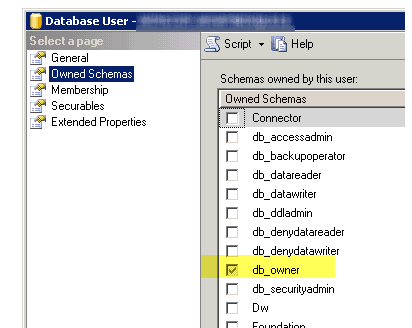Managing an SQL Server database involves various roles and responsibilities, but none as critical as that of the Database Owner, or DBO. A DBO has full permissions inside the database they own, from setting security measures to performing backup and restoration tasks. In this comprehensive guide, we dissect the role, examining its significance, responsibilities, and best practices for efficient database management. stay tuned to learn the DBO meaning.
Table of Contents
- What is DBO (Database Owner)?
- Responsibilities of a DBO
- Permissions: The Extent of Control
- DBO vs SA Account: The Differences
- Best Practices for DBO Management
- Frequently Asked Questions
- Conclusion
- References
1. What is DBO (Database Owner)?
DBO or Database Owner is an account that originally created the database within SQL Server and is tasked with its administrative upkeep. Considered a self-contained administrative domain, the DBO holds full authority to manage permissions and carry out administrative activities within the database. They can add or remove users, set security measures, and execute backup and restoration procedures.

2. Responsibilities of a DBO
As the administrative linchpin of the database, a DBO has a multifaceted role. Below are some of the core responsibilities:
- Permission Management: The DBO assigns roles and permissions to various users, ensuring a secure and efficient database environment.
- Data Backup: Regular backup of the database falls under the DBO’s purview, ensuring data integrity and availability.
- Data Restoration: In the event of data loss, the DBO is responsible for restoring the database to its previous state.
- Monitoring and Tuning: The DBO keeps an eye on performance metrics and tunes the database for optimal performance.
- Audit and Compliance: Ensuring that the database meets regulatory and compliance standards is another critical responsibility of the DBO.
3. Permissions: The Extent of Control
Understanding the extent of a DBO’s permissions is crucial for both the administrator and other users within the SQL Server environment. The DBO has the ultimate say in the following areas:
- User Access: A DBO can add or remove users, as well as assign roles and permissions to them.
- Schema Management: The DBO can alter the database schema, including the addition or deletion of tables, indexes, and data relationships.
- Security Policies: The DBO sets up and maintains the security policies within the database, including encryption and data masking.
- Resource Allocation: Given their high-level access, a DBO can allocate resources like CPU, memory, and storage for various database operations.
- Query Optimization: A DBO has the ability to approve or disapprove stored procedures and optimize complex SQL queries for efficiency.
4. DBO vs SA Account: The Differences
Often, the SA (System Administrator) account is confused with the DBO, mainly because the SA account has DBO privileges by default. However, there are critical differences between the two:
- Scope of Control: The SA account has administrative privileges over the entire SQL Server instance, whereas the DBO is confined to a specific database.
- Task Specificity: SA accounts are often used for broader server-wide tasks, such as software updates and maintenance, while DBOs focus on database-centric tasks like backups and schema changes.
- Security Risks: Using an SA account for all administrative tasks can pose a security risk due to its elevated privileges. It’s advisable to use a DBO account for database-specific activities to minimize the risk.
- Account Ownership: SA is a predefined, server-level role, while a DBO is usually the account that first creates the database, unless explicitly changed later.
Understanding the roles and limitations of both SA and DBO accounts is essential for efficient and secure SQL Server management.
5. Best Practices for DBO Management
Managing a DBO account entails a great deal of responsibility, and the following best practices can help you achieve better control and security:
- Principle of Least Privilege: Only assign the permissions necessary for the DBO to carry out its tasks.
- Regular Audits: Perform regular audits of the DBO account’s activities and permissions.
- Backup and Recovery: Establish a robust backup and recovery strategy. The DBO should periodically run backups and ensure that recovery processes are effective.
- Security Measures: Employ multi-factor authentication and strong passwords for the DBO account to prevent unauthorized access.
- Monitoring: Utilize SQL Server’s built-in monitoring tools or third-party solutions to keep track of performance, security, and audit logs.
6. Frequently Asked Questions
Q: Can the DBO account be changed?
A: Yes, the DBO can be changed using SQL Server Management Studio or Transact-SQL commands.
Q: Is it advisable to use the SA account as the DBO?
A: While convenient, using the SA account as the DBO poses a security risk and is generally not recommended.
Q: What happens when the DBO is deleted or deactivated?
A: SQL Server will typically prevent the deletion of a DBO. If deactivated, you must assign a new DBO to maintain the database.
7. Conclusion
The role of a Database Owner (DBO) in SQL Server is a crucial one, overseeing an extensive range of administrative tasks and responsibilities within a specific database. Understanding the permissions, roles, and best practices associated with DBO management can significantly enhance database security and efficiency.